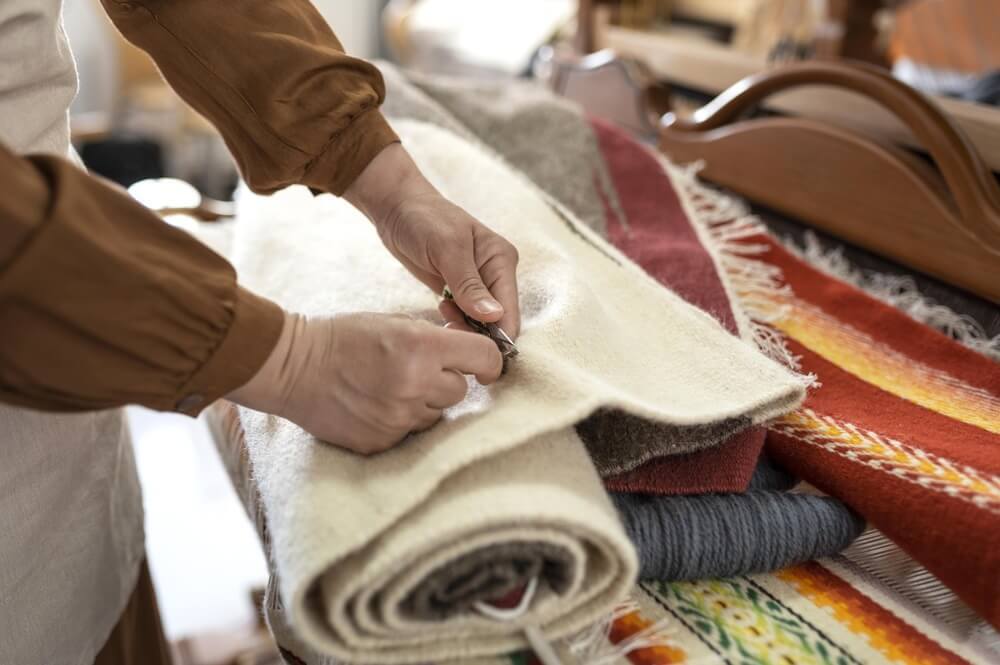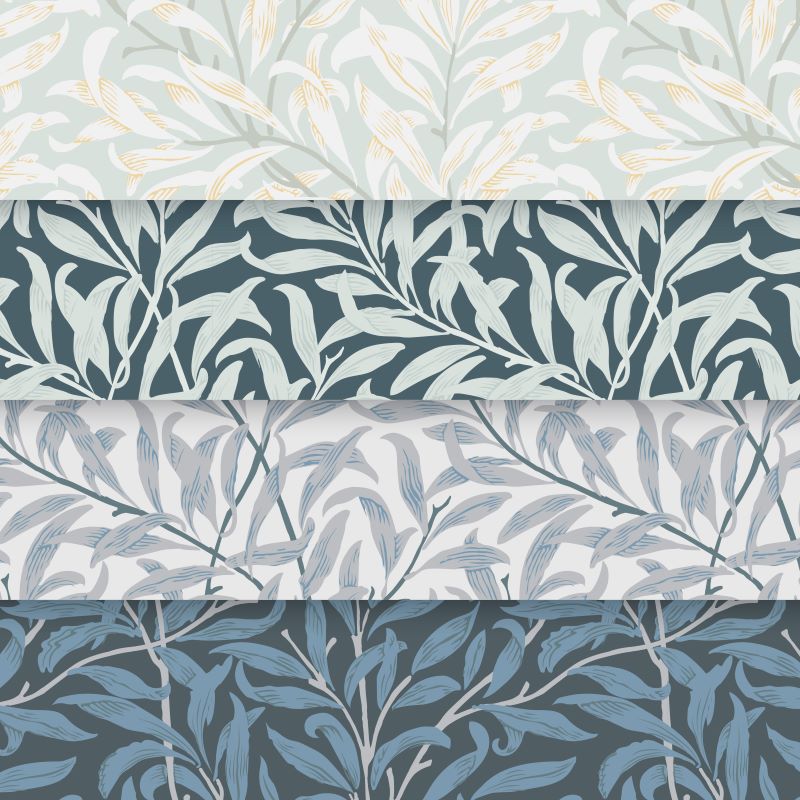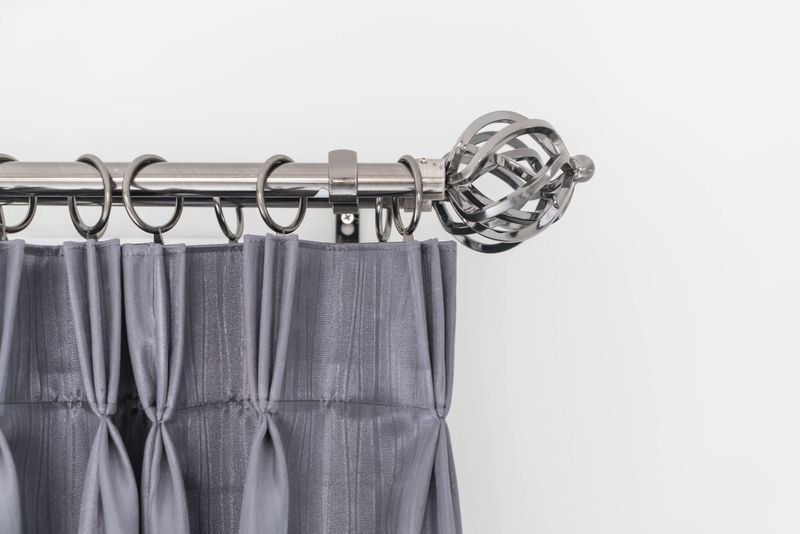Introduction
When you envision a project, it is not uncommon for it to end up looking very different from what you envisioned.
It's important to remember that fabric often has a mind of its own and doesn't always match your initial ideas. This is especially true for beginners who are still learning to envision the end result.
Learning from the beginning
With practice, it becomes easier to see the end result, but if you are just starting out, there are a few things to keep in mind when choosing fabric as it often has a mind of its own and doesn't allow you to make what you wanted.
Here are some guidelines for figuring out what will be the best option for your dream project:
Understand the Fabric's Purpose
Fabrics are designed for different purposes, with each having its special attributes. For example, a fabric suitable for a plush throw blanket that requires softness and extra warmth would be entirely different from the one just dedicated to the clients’ cafe couch, where durability and resistance against rough use are more important.
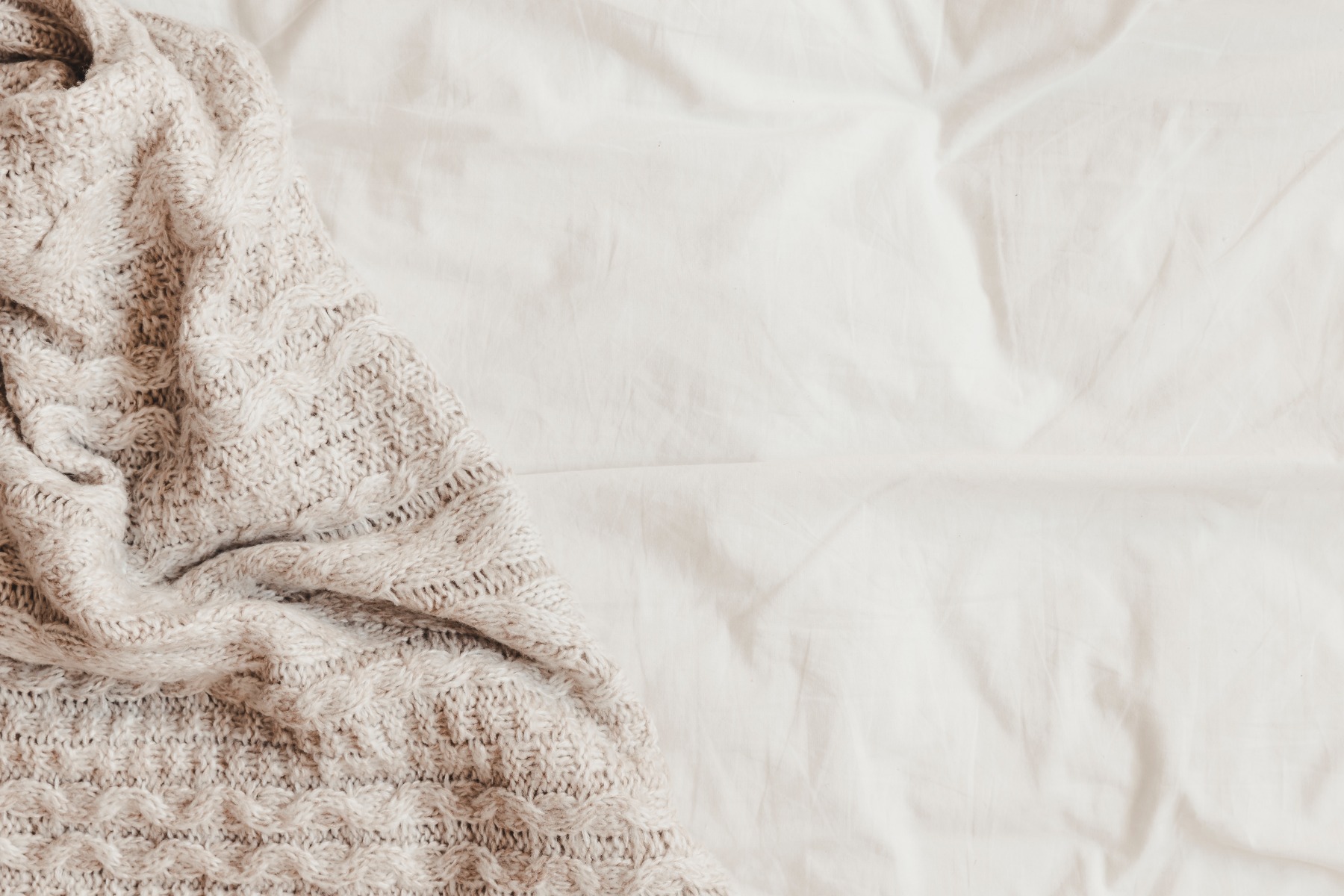
When choosing a fabric, it’s critical to know what fabric your project needs. Identifying the key function of your fabric will help ensure that it does not only wear well but also performs in its natural environment.
Read the Fabric Label
Always read the label to understand the fabric's material and care instructions. The label will also typically include information on whether the fabric can be machine washed or dry cleaned, and how to properly iron it.
If you plan to use a washing machine for your upholstery, check if it's suitable in the care instructions. For more information about fabric labels and their meanings, there's a link to a Wiki page about fabric and clothing label symbols.
Touch and Feel
Don't just rely on the look of the fabric. Touch it, feel it, and even drape it to understand its texture, weight, and flow. We provide Free Sample Shipping across the US – to allow you the all-important opportunity to touch and feel the fabrics before you decide.
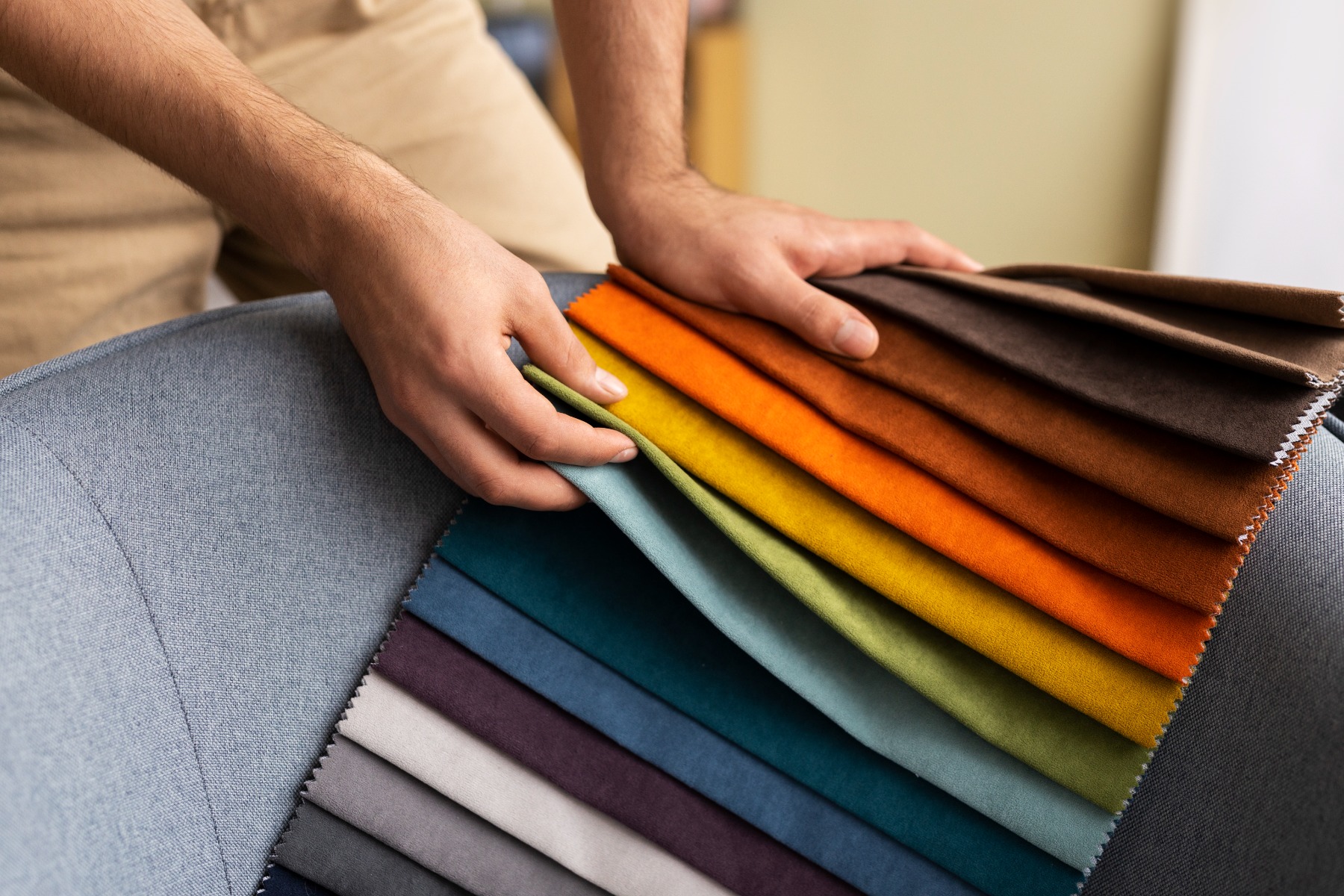
Test Color fastness for the fabric
Checking the color fastness of fabric, especially if it is intended to be worn as clothing, is an important step to help ensure that the color will not fade or fade during washing. Here’s a step-by-step guide on how to check color fastness.
Don’t be afraid and give it a try!
Consider the Season
Choose the fabric based on the season. Linen and cotton are great for summer, while wool and heavier fabrics are good for winter.
For Summer:
- Linen is famous for its incredible breathability and a natural talent for controlling temperature. The distinctive weave of this fabric allows air to easily flow through it and prevents overheating.
- Cotton is a naturally breathable fiber that allows air to circulate freely and pass through the fabric, providing airflow and helping to avoid the concept of being "too hot''.
Source: https://www.elle.com/uk/fashion/what-to-wear/a22069616/best-worst-fabrics-summer-sweat/
For winter:
- Wool is a natural and historic fiber with crimped fibers. These crimps form tiny insulation air pockets inside the fabric, holding warmth well. Wool has high heat retention properties, making it an ideal choice for cold weather.
Source: https://www.askteamclean.com/us/en/laundry/warm-fabrics-for-winter.html
Examine the Weave Durability
Look closely at the weave of the fabric. A tight weave usually means that the fabric is stronger and more durable, while a loose weave may mean that the fabric is softer and more breathable, but more fragile.
To avoid confusion, created a useful double rub method for determining the durability of a material and its intended use.
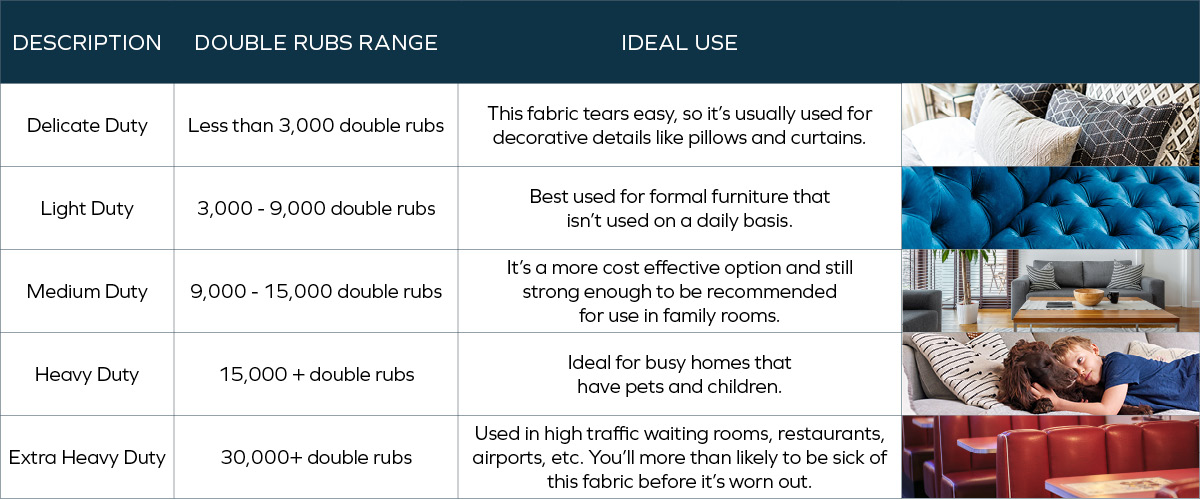
Source: https://id8arc.com/material-of-the-month-textiles/
A Wyzenbeek test is a measurement of the double rub count (back and forth), which quantifies how many times can rub a fabric until it shows wear.
High double rub counts (above 15,000) can indicate a more robust & practical type of fabric while lower ones (below 10,000) are more suitable for decorative or items used infrequently.
Choosing the Right Fabric
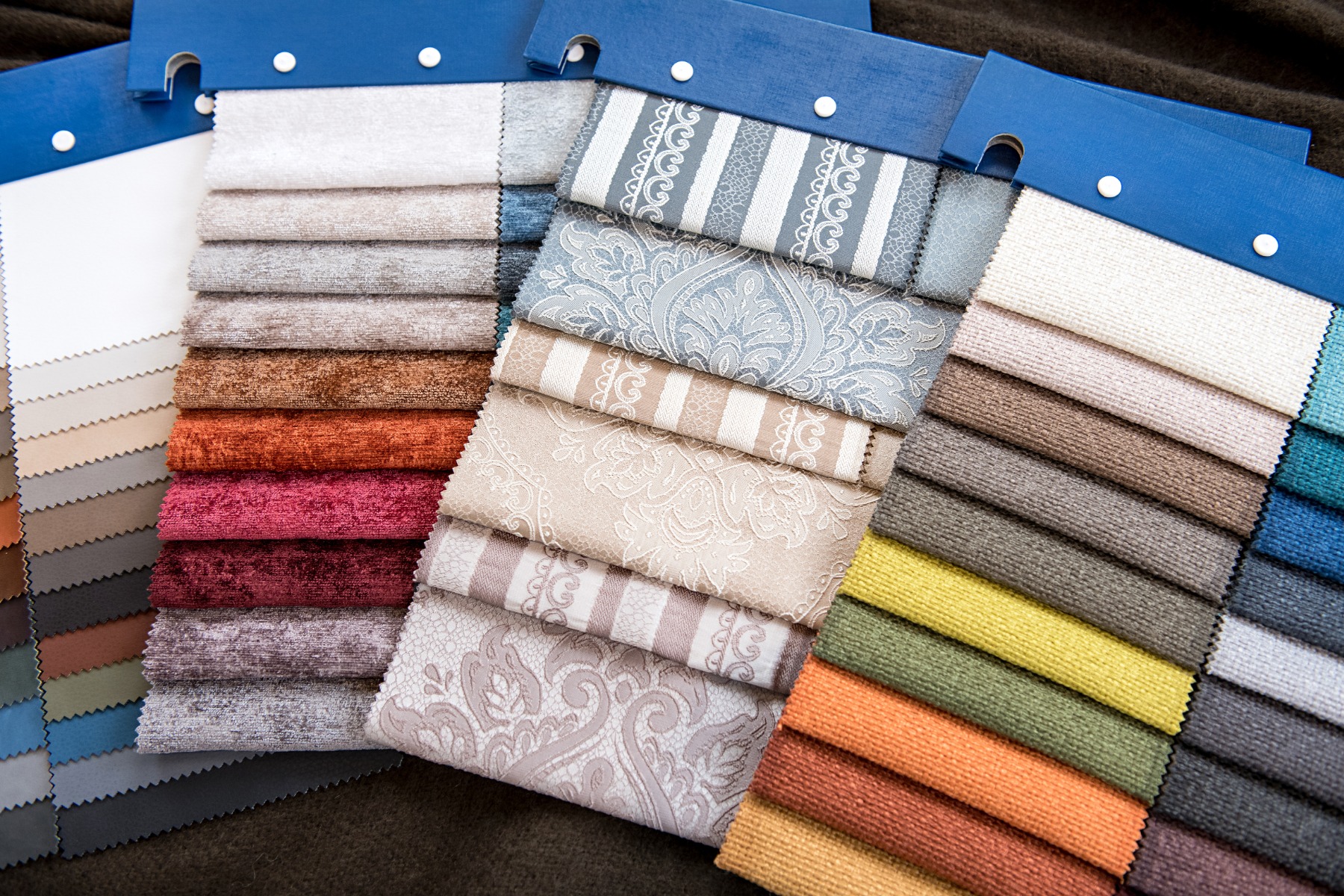
Remember, there is no "one-size-fits-all" fabric. What might be the best fabric for one project could be the worst for another, so it's important to take your specific needs into account:
- For instance, polyester, though durable and versatile, lacks breathability, making it unsuitable for baby clothing, particularly in warm weather.
- Silk is the epitome of luxury, yet it requires careful handling and cool water washing, making it less suitable for high-traffic solutions or items needing frequent washes.
- Cotton is soft, breathable, and natural but can shrink or wrinkle and isn't as durable as synthetic fabrics.
- Linen, while excellent for warm climates due to its moisture absorption, tends to wrinkle and requires regular ironing.
|
Fabric Type |
Example from store (well-performing) |
Durability range |
Properties (softness, waterproofness, etc.) |
Use cases |
|
Silk |
5,000-15,000 rubs |
Smooth, soft, luxurious |
Bedding, Table something, pillows, etc. |
|
|
Cotton |
3,000 - 15,000 rubs |
Breathable, soft, durable |
Curtains, upholstery fabric |
|
|
Polyester |
10,000 - 30,000 rubs |
Stain-resistant, durable, easy to clean |
Sofa and chair upholstery, curtains, bedding |
|
|
Linen |
12,000 - 20,000 rubs |
Highly breathable, natural texture, elegant |
Cushions, upholstery, table coverings |
|
|
Chenille |
8,000 - 15,000 rubs |
Plush, soft, visually appealing |
Couches and chairs upholstery, decorative pillows |
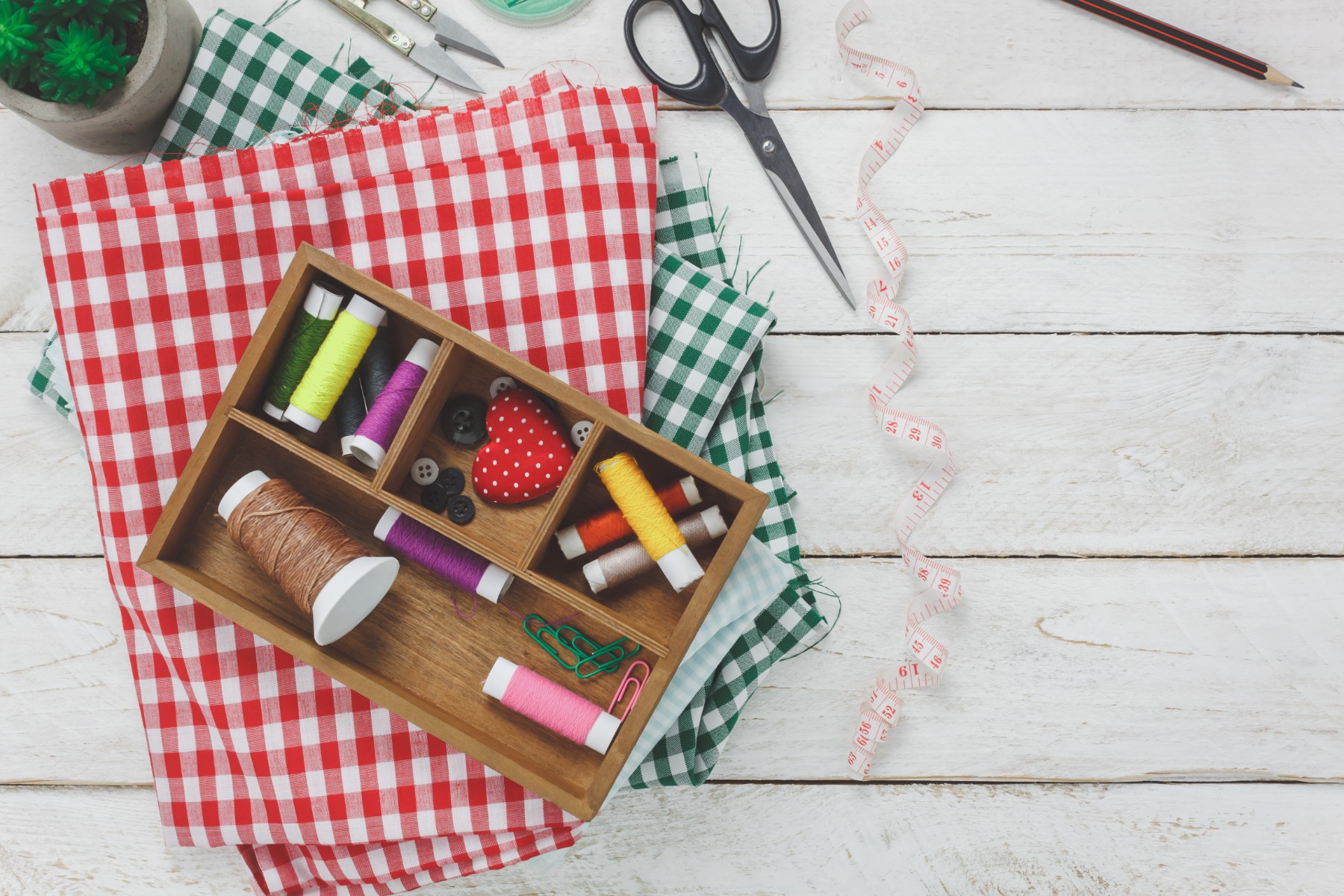
Frequently Asked Questions
What are the most durable sofa fabrics?
When it comes to the most durable sofa fabrics, options such as Herculon, Chenille, and Bouclé always top the list. The durability ratings of these upholstery fabrics and the low amount of scuffing make them a great choice for use in high-touch (commercial) environments.
What are some popular fabric patterns?
FabricMill offers a very wide selection of fabrics with different patterns and designs to suit every taste and color. Our range includes nautical, novelty, floral, animal, French country, and many other designs where everyone can find the fabric that suits them.
Do all fabrics have the same texture?
Different fabrics have unique textures. Silk creates a smooth feel, while wool and cotton are more textured and coarse. Choosing the perfect fabric is key to creating the desired ambiance for your project.
Each fabric is unique - that's their biggest plus. For example, wool is a very textured and rather coarse material with heat-retention properties. At the same time, there are such fabrics on the market as silk, a smooth and soft material that is regarded as the most comfortable material for skin contact.
You should consider all factors and properly understand the function you expect from the purchased fabric to fulfill your ideas 100%.
Which fabric is good for outdoor use?
Phifertex and Sunbrella are two great options for outdoor use. Their high durability, stain resistance, and water resistance make them our store leaders in this area.
What is a fabric's rub count?
A fabric's rubs rate is an important metric for assessing its durability and depends on the testing methods used: the Martindale method (20,000–40,000 rubs) or the Witzenbeck method (10,000–25,000 double rubs). They both measure how much fabric can rub physically without showing signs of wear, such as thinning or pilling.
Different fabrics vary in the amount of wiping - those higher on the scale are softer and recommended for high-traffic areas, while fixed fabrics are recommended for areas where not as many people walk around most of the time.
Bottom Line
We hope this guide has been useful and will help you select the appropriate fabric for your project. Should you need more guidance or information, The Fabric Mill is here to help. Our knowledgeable staff, backed by years of experience in handling a variety of fabrics, are at your service.
Happy creating!


